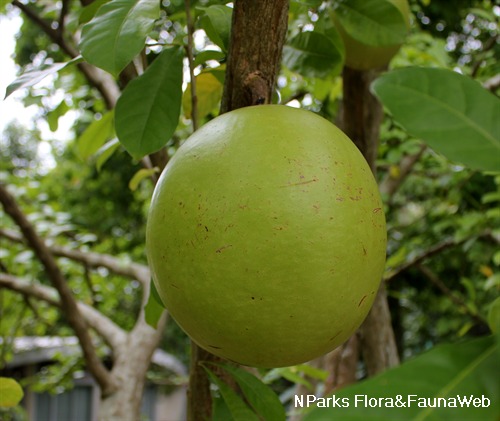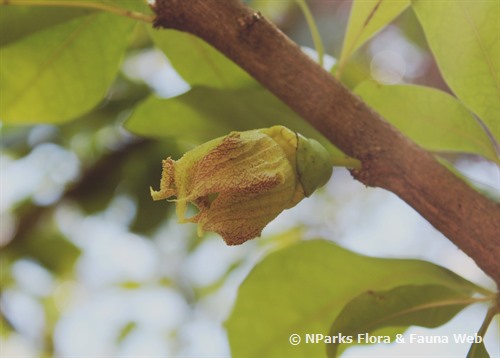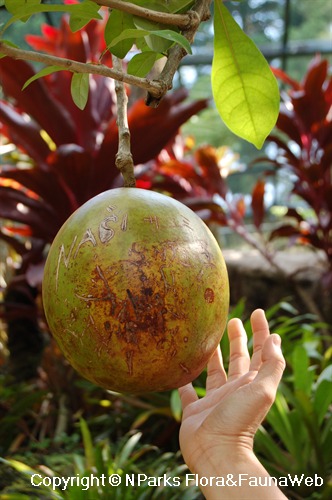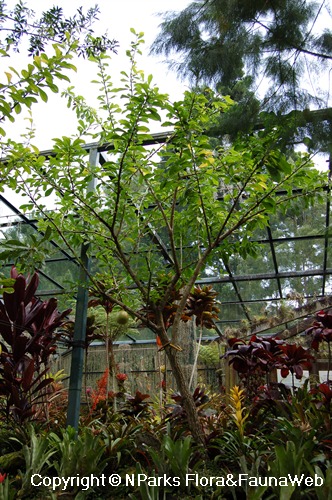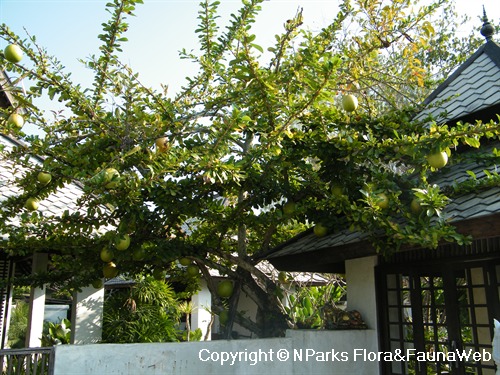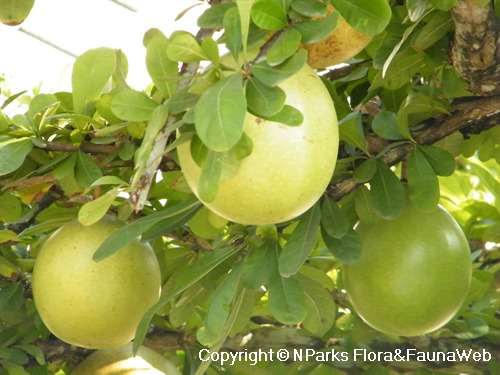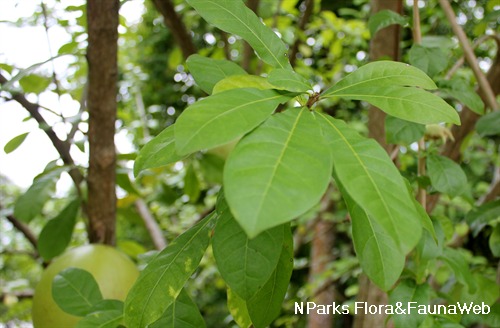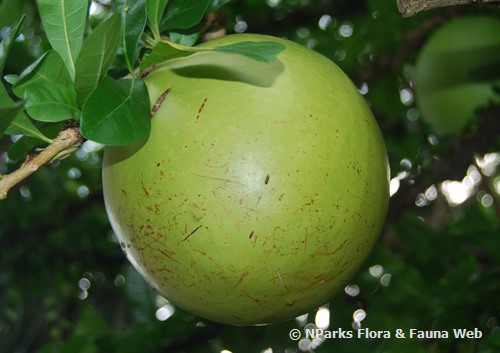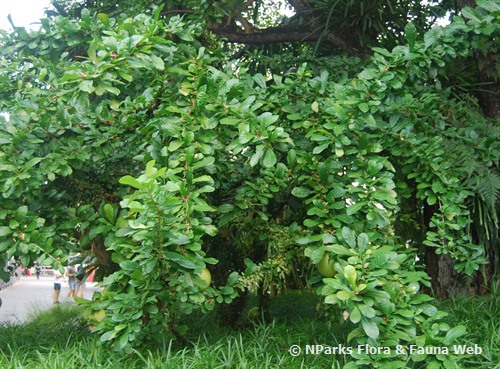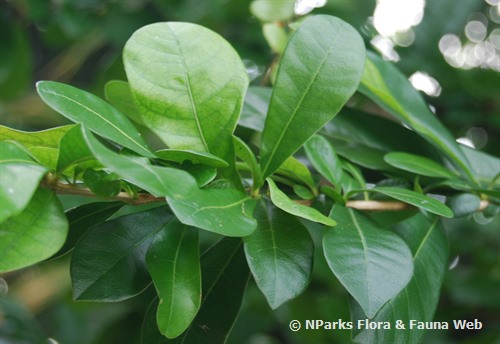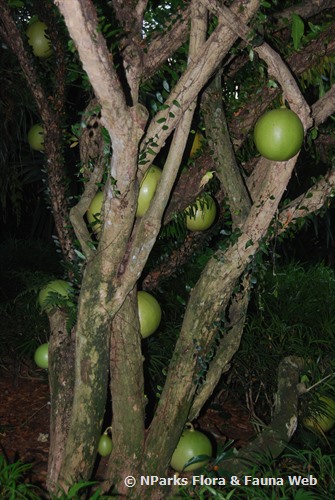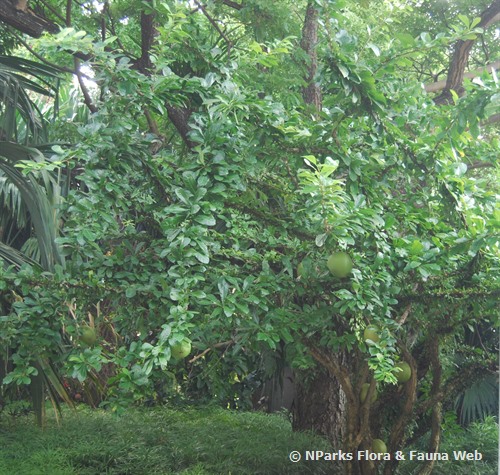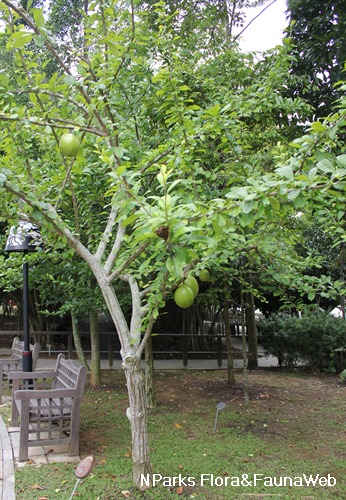
Name
Classifications and Characteristics
| Plant Growth Form | Tree |
|---|---|
| Mode of Nutrition | Autotrophic |
Biogeography
| Native Distribution | South America |
|---|---|
| Native Habitat | Terrestrial |
| Preferred Climate Zone | Tropical |
Description and Ethnobotany
| Growth Form | Small tree with a crooked growth form, low and much-branched, able to grow up to able 10 m tall. |
|---|---|
| Trunk | Fissured and grey bark. |
| Foliage | Green oblanceolate leaves, alternate arrangement, measuring about 4 - 26 cm long and 1 - 7.5 cm wide, subsessile. |
| Flowers | Yellow tubular flowers with purple veins, solitary or sometimes paired and about 5 cm long, musty fragrance. |
| Fruit | Fruit is a large, green globular berry about 13 - 20 cm long and up to 30 cm wide, attached to the trunk and branches, contains flat seeds which are embedded in the pulp. |
| Etymology | Genus Crescentia is named after Pietro Crescenti (1231 - 1321), an Italian monk and also the author of Il libro della agricoltura. Species cujete is a vernacular Brazilian name for the gourds of the plant. |
| Ethnobotanical Uses | Medicinal: Tea made from the leaves can be used in the treatment of flu, pneumonia and hypertension. |
Landscaping Features
| Desirable Plant Features | Ornamental Flowers, Ornamental Fruits |
|---|---|
| Landscape Uses | Parks & Gardens, Small Gardens |
| Usage Hazard - Cons | Toxic Upon Ingestion |
| Usage Hazard - Cons Remarks | Pulp of the fruit is toxic and should not be consumed. |
Fauna, Pollination and Dispersal
| Fauna Pollination Dispersal Associated Fauna | Bat Food |
|---|
Plant Care and Propagation
| Light Preference | Full Sun |
|---|---|
| Water Preference | Moderate Water |
| Plant Growth Rate | Moderate |
| Rootzone Tolerance | Drought Tolerant, Well-Drained Soils |
| Propagation Method | Seed |
Foliar
| Mature Foliage Colour(s) | Green |
|---|---|
| Foliar Arrangement Along Stem | Alternate |
| Leaf Area Index (LAI) for Green Plot Ratio | 2.5 (Tree - Open Canopy) |
Image Repository
Others
| Master ID | 1538 |
|---|---|
| Species ID | 2831 |
| Flora Disclaimer | The information in this website has been compiled from reliable sources, such as reference works on medicinal plants. It is not a substitute for medical advice or treatment and NParks does not purport to provide any medical advice. Readers should always consult his/her physician before using or consuming a plant for medicinal purposes. |

